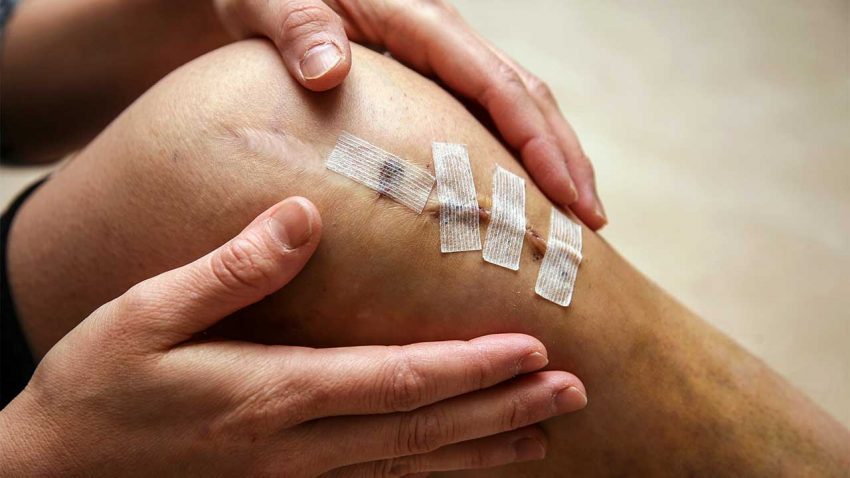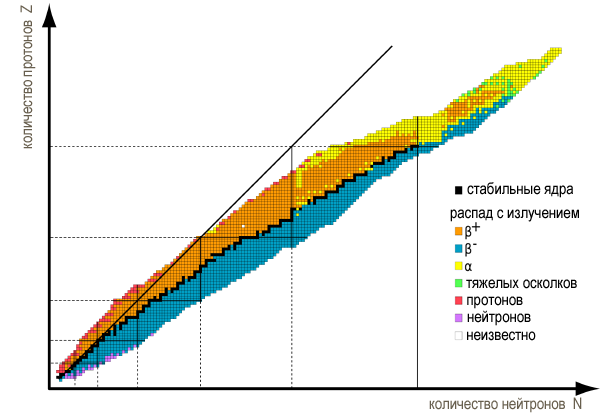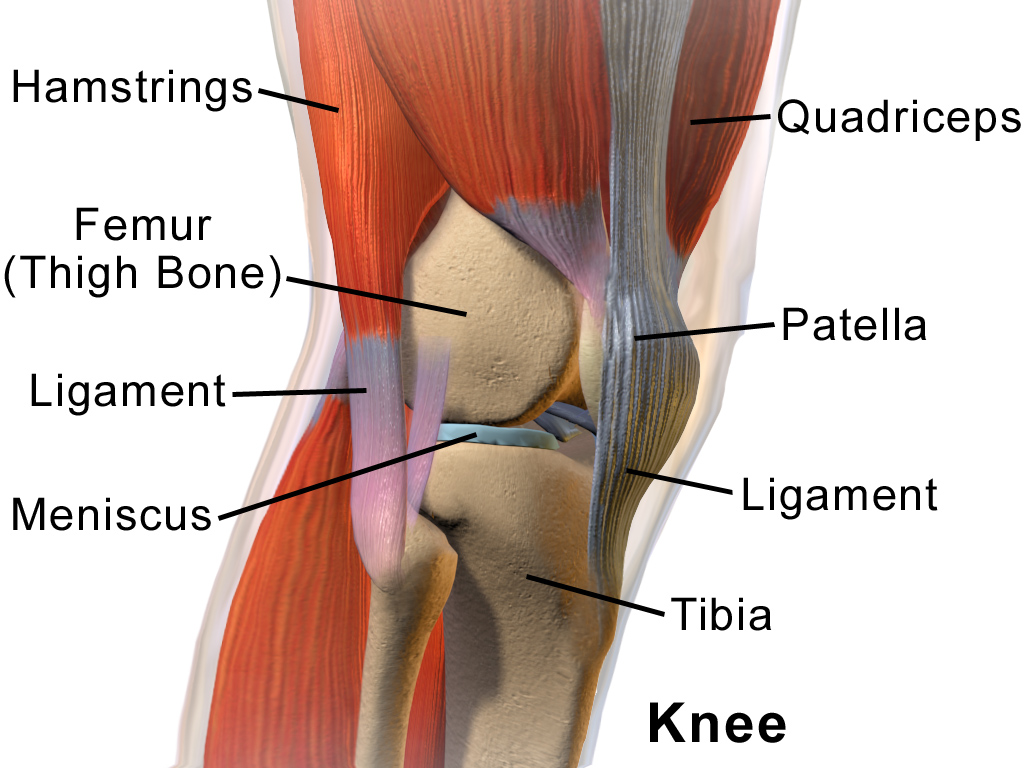Science: Why do knee injuries often not heal?

A source
After several years of living in the mountainous country of Switzerland, skiing in the winter and summer hiking in the mountains, it is surprising that my ligaments and cartilage in the knee joint are still intact. Although in order to damage the ligaments or meniscus, it is quite enough to carelessly turn around on an office chair or play football (there are precedents).
In the scientific journal Science published an article that explains why the injuries of the knee joint do not heal, sometimes throughout the patient's life. For details of the isotope analysis of cartilage, welcome under cat.
Preamble
The isotopic method of analysis became widely known after the discovery of the so-called radiocarbon method of dating fossil remains. As the name implies, this method deals with the isotopic composition of materials and any other substances. In other words, the method shows the difference in concentration between the main, dominant isotope of a given atom and its “analogues”: for basic carbon - 12 , and 13 and 14 - for “analogs”, for basic oxygen - 16 O, and 15 O, 17 O, 18 O - "analogues".
')
Each element has its own isotopic series, including relatively long-lived isotopes, the concentration of which can be measured and consumed with any useful purpose.

A variety of isotopes in nature
Last time we briefly touched upon the application of this method to the determination of the authenticity of wine and food , but today we will talk about you and me.
Plot
If you, my dear readers, have seriously fallen on the ski slope or slipped on the ice, then most likely you will hope to break something (an arm or a leg, for example) than to damage the knee joint, especially the meniscus or ligaments. Unlike bones, which are relatively quickly restored, cartilage tissue, according to a new study, will never recover after a certain age (perhaps with rare exceptions). Strange as it may seem, but the 60-year-old nuclear explosions helped this research to come to light.
Medical terminology at a glance
A cursory analysis of the Wiki, and meniscus and ligaments, are essentially cartilage species ( cartilage ), although the original article mentions "cartilage in the knee joint" ( knee cartilage ) with a photograph of the cut joint means rubbing surfaces thereof (that cartilage tissue that covers the bone itself). However, apparently, these studies can be extended to other cartilage tissue.
UPD: I asked the doctor, she said that the cartilage and ligaments were different. Therefore, the description of the article should be attributed solely to cartilage tissue.
UPD: I asked the doctor, she said that the cartilage and ligaments were different. Therefore, the description of the article should be attributed solely to cartilage tissue.

The structure of the knee joint. A source
“Surgeons who practice replacing parts of the knee joint should not be afraid of [our research],” says study co-author and rheumatologist Michael Kjær from the University of Copenhagen. "Loss of work does not threaten them."
Athletes, extremes, and just ordinary people who have injured the knee joint, can confirm, knee injuries often do not heal for a very long time and they have to live with painful sensations and limit themselves for the rest of their lives. But since it is very difficult to control the circulation of cartilage tissues inside a living organism, scientists and physicians were not completely sure how the healing process actually takes place (and whether it happens).
To find this out, Michael Kjer and his colleagues used the radioisotope method to find out the age of molecules by measuring the concentration of 14 C in the tissues. The amount of carbon 14 C increased dramatically in the atmosphere with the onset of the nuclear era and active nuclear testing in the 1950s. However, due to the ban on ground-based nuclear explosions, its amount in the atmosphere rapidly decreased after 1963.
Of course, some of this carbon got into human organisms along with food and air. If the molecule is “old” and has not been replaced naturally during the life of a person, the content of the 14 C isotope will correspond to the atmospheric level when it was a child or a teenager. That is, in 60-70-year-old patients, an increased isotope level in the tissues should be observed. Conversely, if the cartilage tissue is restored, then for the construction of new molecules, a new “raw material” is used, depleted in relation to the 14 C isotope, that is, its concentration will be close to the current atmospheric level.
So, armed with this method, the scientists studied the level of the 14 C isotope from cartilage material taken from the knee joint of 22 patients born before 2000 and underwent surgery to replace cartilage tissues for medical reasons. We checked both places with a high load level (in the center of the joint) and with a small one (at the edges).
It turned out that in patients aged 8 to 13 years, the level of the 14 C isotope in collagen (the main plastic component of cartilage tissue, although other organic molecules with similar results were tested) turned out to be close to the atmospheric level. In one patient born before the nuclear era in 1935, collagen almost did not contain this isotope. In contrast, in several patients born in the 1950s, the level of 14 C in the tissues was greatly increased, confirming the initial hypothesis.
This direct method for measuring collagen turnover in cartilage tissue (unfortunately invasive) goes against some previous studies that used indirect observation methods. Even in those areas of the joint that are under a heavy load, the body of adults is not able to regenerate collagen aka cartilage tissue.
Scientists have also tried various methods of stimulating the growth of cartilage tissue, including stem cell injections. However, as it turned out, they do not have any significant effect on the restoration of cartilage. It turns out that the discovery actually puts an end to the whole branch of medicine, which used these methods to "self-repair" the tissues of the knee joint.
The study once again emphasizes the importance of protecting the knee joint and ligaments in it from extreme loads and injuries. Biologist Richard Loeser of the University of North Carolina agrees with the same conclusion: “You should take care of your joints while you are young. After you already have a damaged meniscus or ligaments [too late to drink Borjomi] because they will not restore themselves ”.
The original article " Radiocarbon dating reveals minimal collagen turnover " was published in Science Translational Medicine ( DOI: 10.1126 / scitranslmed.aad8335 ).
The note “ Why knee injuries often don't heal ” was published in Science ( DOI: 10.1126 / science.aag0634 ).
PS: Do not forget to subscribe to the blog : You are not difficult - I am pleased!
And yes, about the defects noted in the text, please write in the LAN.
UPD: They threw an interesting article to read about collagen and various additives in nutrition for the joints.
Sometimes briefly, and sometimes not so much about the news of science and technology, you can read on my Telegram channel - welcome;)
Source: https://habr.com/ru/post/396479/
All Articles